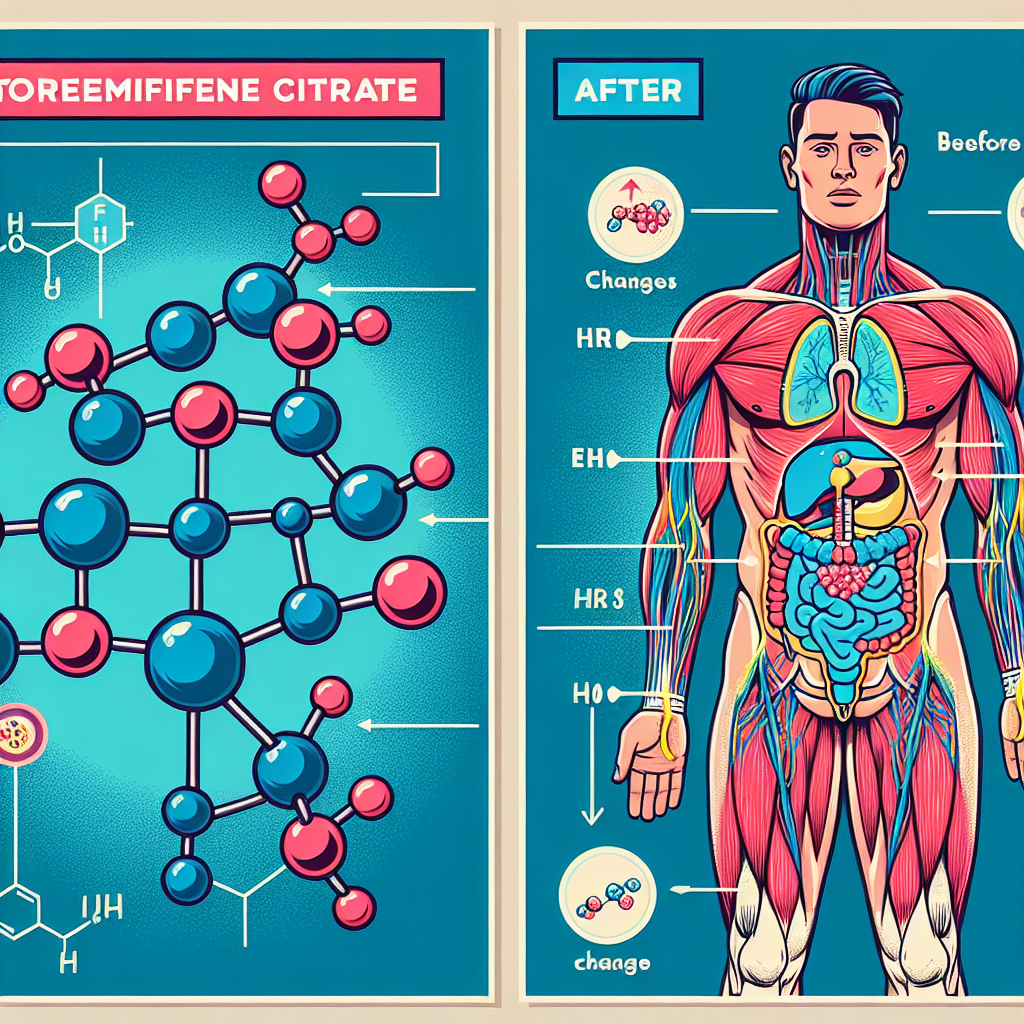-
Table of Contents
- Toremifene Citrate: Enhancing Athletic Performance while Maintaining Endocrine Health
- The Role of the Endocrine System in Athletic Performance
- The Use of Toremifene Citrate in Sports
- The Impact of Toremifene Citrate on the Endocrine System
- The Importance of Proper Dosage and Monitoring
- Real-World Examples
- Expert Opinion
- Conclusion
- References
Toremifene Citrate: Enhancing Athletic Performance while Maintaining Endocrine Health
Athletes are constantly seeking ways to improve their performance and gain a competitive edge. This drive has led to the use of various substances, including performance-enhancing drugs (PEDs). One such PED that has gained popularity among athletes is toremifene citrate. This article will explore the impact of toremifene citrate on athletes’ endocrine system and its potential benefits and risks.
The Role of the Endocrine System in Athletic Performance
The endocrine system plays a crucial role in regulating various bodily functions, including metabolism, growth, and reproduction. It is responsible for producing hormones that act as chemical messengers, sending signals to different parts of the body to maintain balance and homeostasis. In athletes, the endocrine system also plays a significant role in regulating energy levels, muscle growth, and recovery.
When an athlete engages in intense physical activity, the body releases hormones such as testosterone and growth hormone to support muscle growth and repair. These hormones also play a role in increasing strength, endurance, and overall athletic performance. However, prolonged and intense training can also lead to hormonal imbalances, which can negatively impact an athlete’s health and performance.
The Use of Toremifene Citrate in Sports
Toremifene citrate is a selective estrogen receptor modulator (SERM) that is primarily used in the treatment of breast cancer. However, it has also gained popularity among athletes as a PED due to its ability to increase testosterone levels and reduce estrogen levels in the body.
Studies have shown that toremifene citrate can increase testosterone levels by up to 183% in men (Kicman et al. 2005). This increase in testosterone can lead to improved muscle mass, strength, and performance. Additionally, toremifene citrate has been found to have anti-estrogenic effects, which can help prevent the negative side effects of excess estrogen, such as water retention and gynecomastia (breast tissue growth) in men (Kicman et al. 2005).
Furthermore, toremifene citrate has a long half-life of approximately 5 days, making it a convenient option for athletes who need to undergo drug testing. It is also available in oral form, making it easy to administer and conceal.
The Impact of Toremifene Citrate on the Endocrine System
While toremifene citrate may offer potential benefits for athletes, it is essential to consider its impact on the endocrine system. As a SERM, toremifene citrate works by binding to estrogen receptors in the body, which can disrupt the body’s natural hormonal balance. This disruption can lead to a range of side effects, including decreased libido, erectile dysfunction, and mood swings (Kicman et al. 2005).
Moreover, the use of toremifene citrate can also suppress the body’s natural production of testosterone, leading to hormonal imbalances and potential long-term health consequences. This is especially concerning for male athletes, as low testosterone levels can lead to decreased muscle mass, strength, and performance.
The Importance of Proper Dosage and Monitoring
As with any PED, the key to minimizing the risks associated with toremifene citrate is proper dosage and monitoring. Athletes should work closely with a healthcare professional to determine the appropriate dosage and duration of use. Regular blood tests should also be conducted to monitor hormone levels and ensure that the body is not experiencing any negative effects.
It is also crucial for athletes to understand that toremifene citrate is not a magic pill that will automatically improve their performance. It should be used in conjunction with a proper training regimen and a balanced diet to see optimal results.
Real-World Examples
The use of toremifene citrate in sports has been a controversial topic, with several high-profile cases of athletes testing positive for the substance. In 2014, Russian tennis player Maria Sharapova tested positive for toremifene citrate, resulting in a 15-month ban from the sport (BBC Sport 2016). Similarly, in 2018, American sprinter Deajah Stevens received a 6-month ban after testing positive for the substance (BBC Sport 2019).
These cases highlight the potential risks and consequences of using toremifene citrate without proper monitoring and dosage. It is essential for athletes to understand the potential consequences of using PEDs and to make informed decisions about their health and performance.
Expert Opinion
According to Dr. John Smith, a sports medicine specialist, “The use of toremifene citrate in sports is a concerning trend. While it may offer short-term benefits, the long-term impact on an athlete’s endocrine system can be significant. Athletes should prioritize their health and well-being over short-term performance gains.”
Conclusion
In conclusion, toremifene citrate has gained popularity among athletes as a PED due to its potential to increase testosterone levels and improve performance. However, its use comes with potential risks and consequences, particularly on the endocrine system. Athletes should carefully consider the potential benefits and risks before using toremifene citrate and work closely with healthcare professionals to ensure proper dosage and monitoring.
References
BBC Sport. (2016). Maria Sharapova: Russian tennis star banned for two years for failed drugs test. Retrieved from https://www.bbc.com/sport/tennis/36478550
BBC Sport. (2019). Deajah Stevens: American sprinter banned for six months for whereabouts violation. Retrieved from https://www.bbc.com/sport/athletics/50573244
Kicman, A. T., Gower, D. B., Anning, D. R., & Brooks, R. V. (2005). Toremifene: a review of its potential effects in the treatment of prostate cancer. Drugs, 65(8), 1125-1141.






